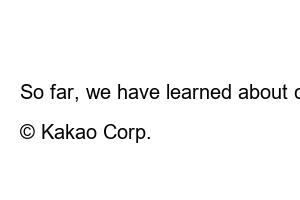신호위반 카메라 벌금When passing a place with a traffic violation camera at an intersection, if the light turns yellow or red, you must stop, but you may pass. If possible, you should stop when the light is amber, and if you can get out of the intersection before it turns red, or if stopping could create a dangerous situation, you should pass quickly.
When passing an intersection, you must not enter the intersection if you stop or obstruct the flow of traffic depending on the conditions of the vehicle in front. It is especially important to stop when the traffic light turns yellow. Remember that a yellow light means stop, not go fast.
Tail-biting refers to a state of being stopped at an intersection due to severe congestion even after the traffic signal changes to red. If you make a call at an intersection when the signal changes to yellow, it is a traffic violation.
If caught tail-biting, a fine of 60,000 won and 15 penalty points will be imposed.
If you pass the traffic light while it is red, fines and demerit points will be imposed in the event of an accident due to signal violation.
Traffic accidents can be divided into three types: general negligence accidents, gross negligence accidents, and 12 gross negligence accidents. In particular, be careful as the 12 major negligence accidents can be punished regardless of agreement or insurance.
1. Signal Violation
2. Violation of the center line
3. Speeding more than 20 km/h
4. Violation of the passing method
5. Violation of the railroad crossing method
6. Crosswalk accident
7. Driving without a license
8. Drunk Driving
9. Sidewalk encroachment
10. Violation of passenger fall prevention obligations
11. Violation of safe driving duty in child protection zone
12. Cargo Securing Measures
If you violate a signal from the traffic police or a safety sign indicating a curfew or temporary stop, you should be aware that gross negligence traffic accidents may apply.
If you cross the stop line when the traffic light turns yellow, it is a traffic violation.
If you are caught on a traffic light camera while the traffic light is red, you will be fined, but not penalized. The fine is 70,000 won for a car, and 130,000 won for a child protection zone.
In the case of penalty points, it is not applied to cameras that violate traffic lights, but fines and penalty points are applied at the same time if the traffic police are caught violating traffic lights. If you are caught violating a signal on a general road, you get 15 penalty points, but if you are caught violating a signal in a child protection area, you get 30 points, so be especially careful in child protection areas.
Fines are imposed on the owner of the vehicle because the driver cannot be identified when a parking violation or an unmanned enforcement camera is caught.
In other words, fines for negligence are imposed on the owner of the vehicle as the driver cannot be identified, and fines are imposed on the driver on the spot regardless of the owner of the vehicle.
You may have seen fixed enforcement cameras as you pass through intersections. This camera can control up to 250km, and it is possible to crack down not only speeding violations, but also signal violations and traffic violations on the shoulder.
The speed detection accuracy is quite high, and the license plate recognition error rate is less than 2%, which can detect most vehicles in practice.
Signal Violation Enforcement Cameras interlock with traffic signals in front of intersections or crosswalks to crack down on speeding, signal violations, tail-biting, etc. (Speed Violation, Signal Violation, Lane Violation)
In particular, it is not caught at a yellow light, but when it changes to a red light, crackdowns start from about 0.5 to 1 second.
In other words, the moment the light turns red, the control is not conducted, but it can be controlled from 0.5 to 1 second, so please stop at the yellow light as much as possible.
Enforcement camera enforcement is done through a detection line (loop detector) buried in the road. This is called a loop detection method, and you can see that the detection line is buried in a rectangular or octagonal shape on the asphalt road in front of the stop line.
The detection line is installed at a distance of 20 to 30 m from the camera, and when a vehicle passes the sensor, the travel time is measured to control the driving speed or signal violation.
When the light turns red, don’t pass by just because there is no control, and stop immediately when the light turns yellow.
So far, we have learned about cracking down on signal violation cameras.
TEL. 02.1234.5678 / Pangyoyeok-ro, Bundang-gu, Seongnam-si, Gyeonggi-do
© Kakao Corp.

